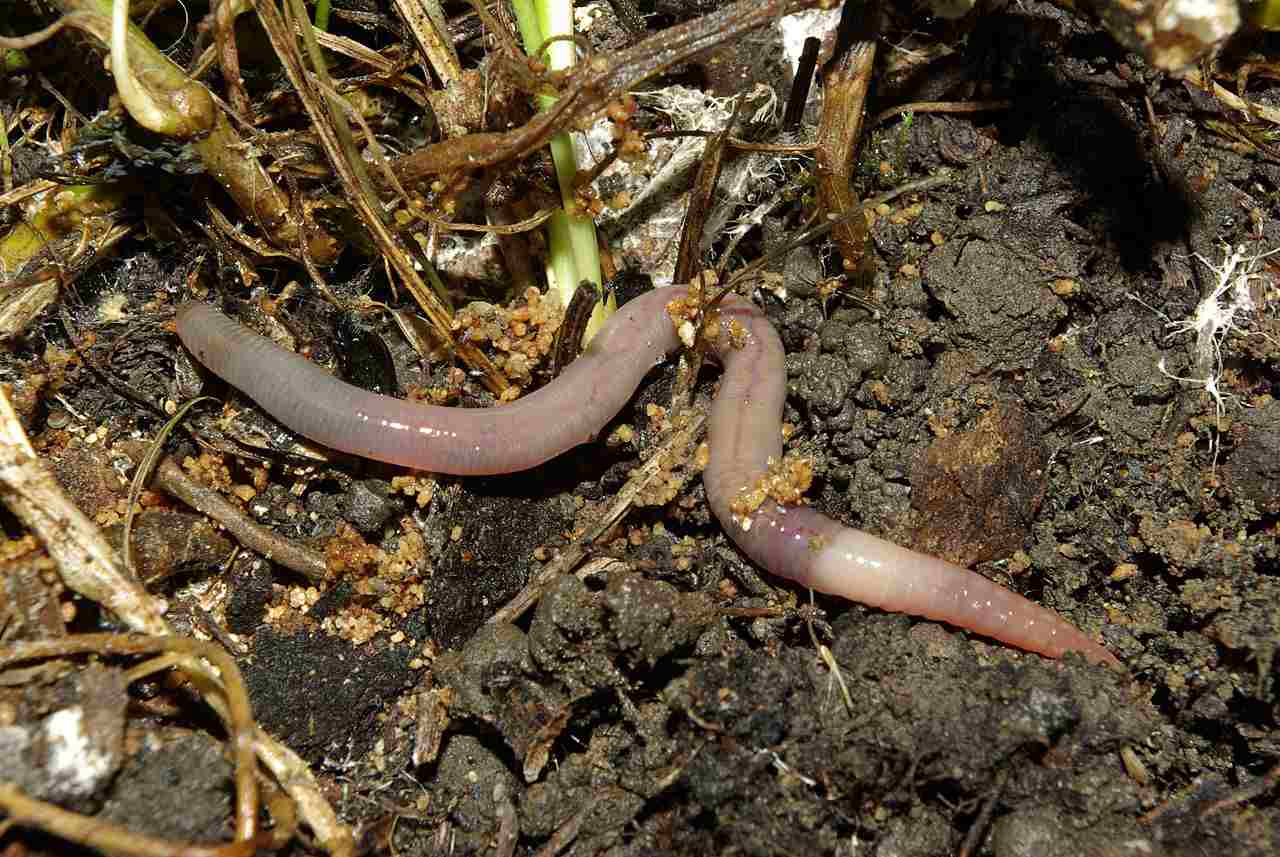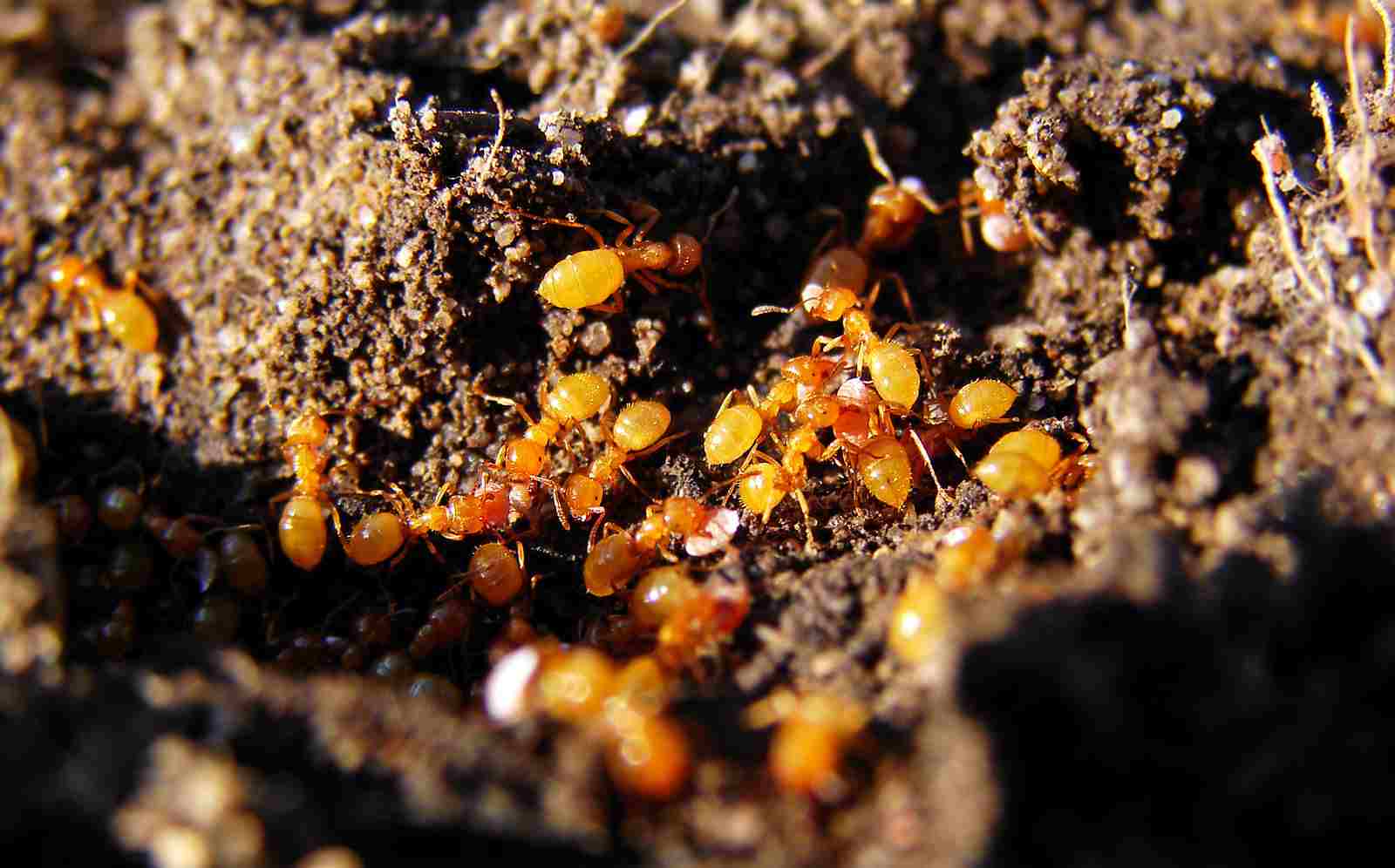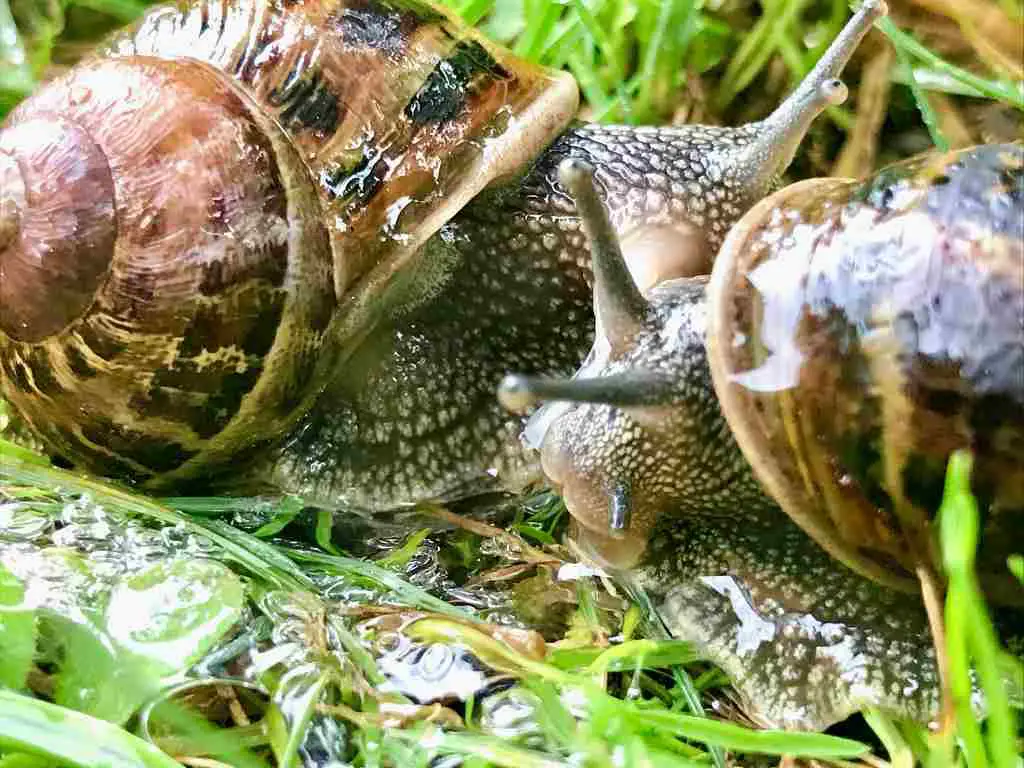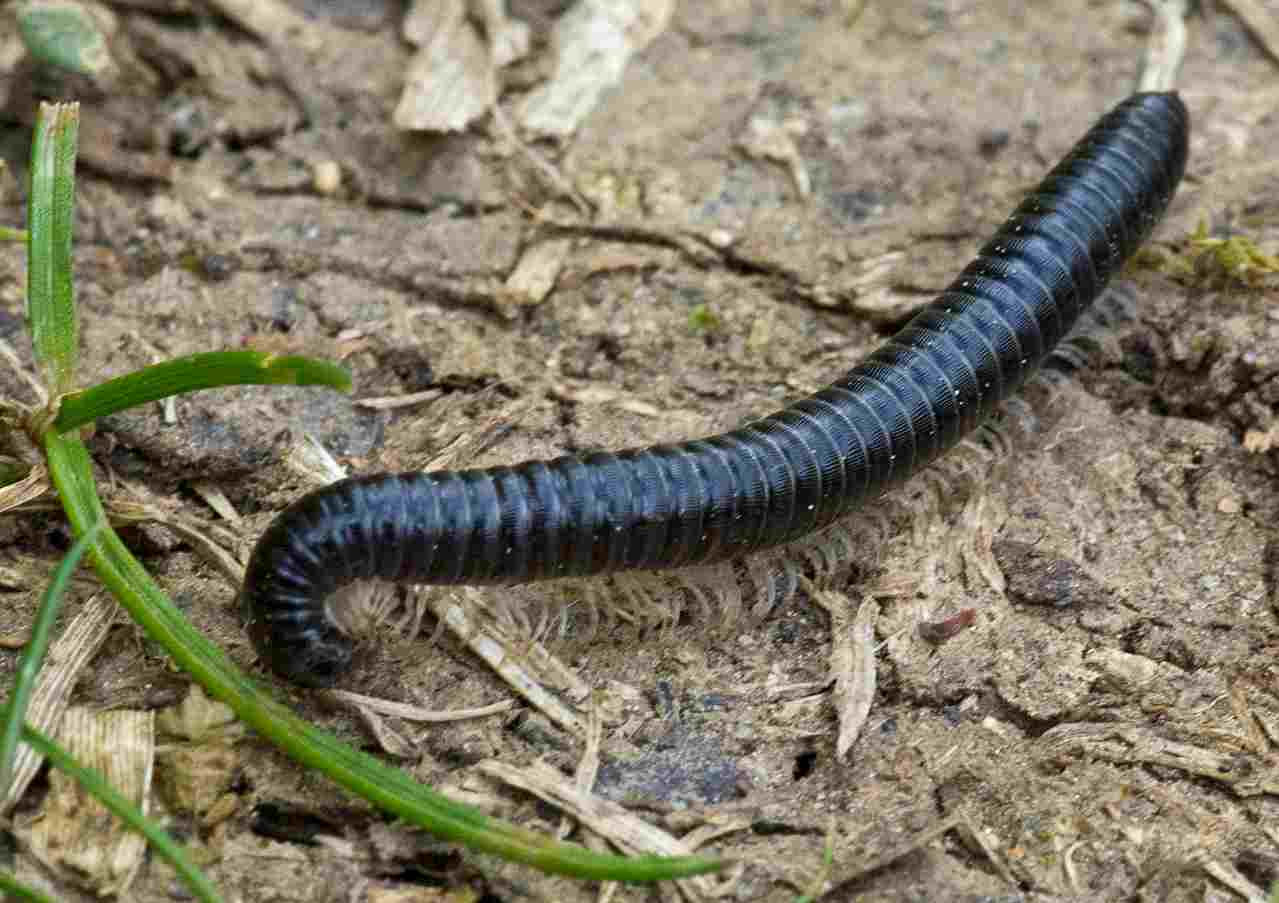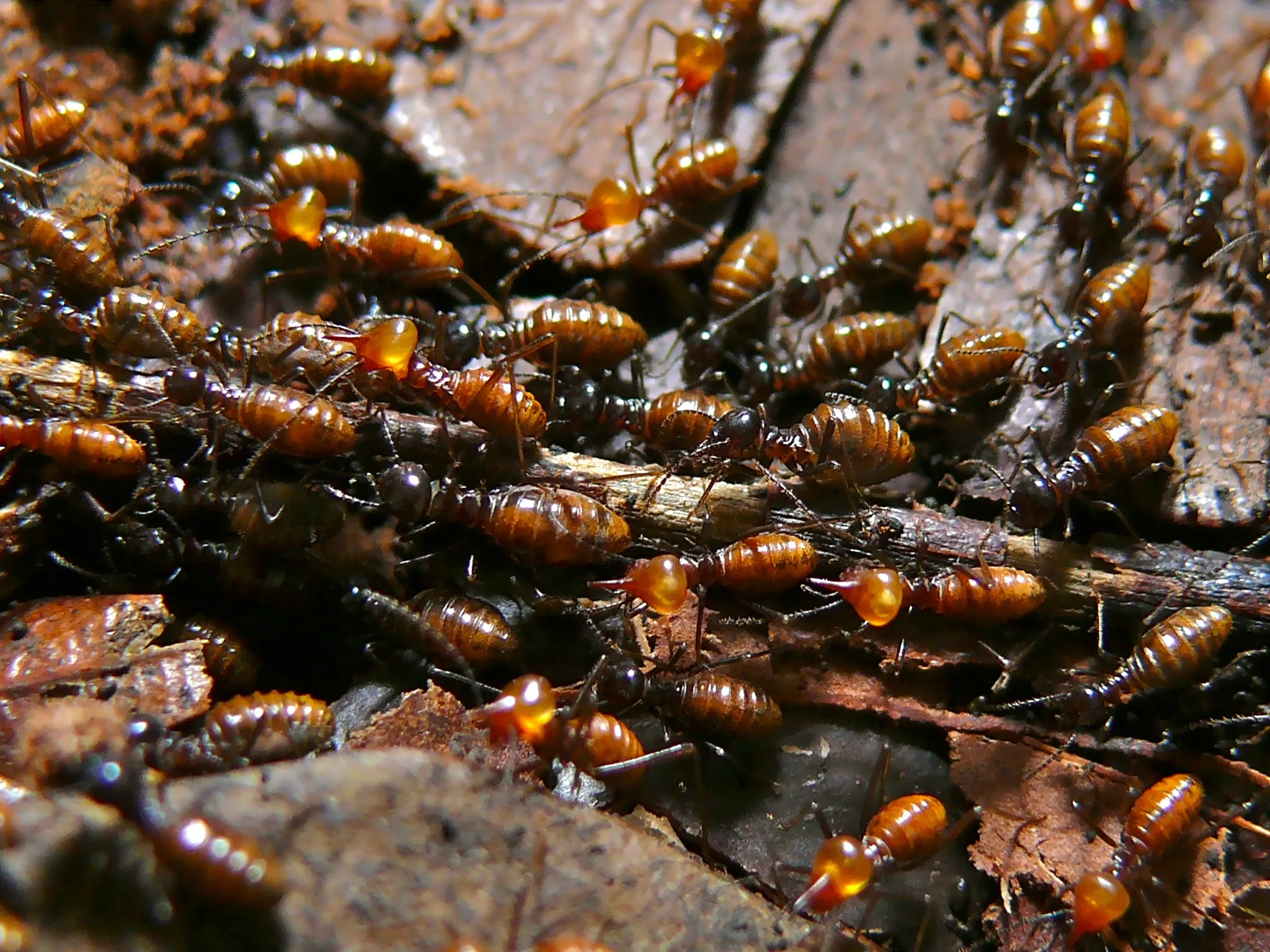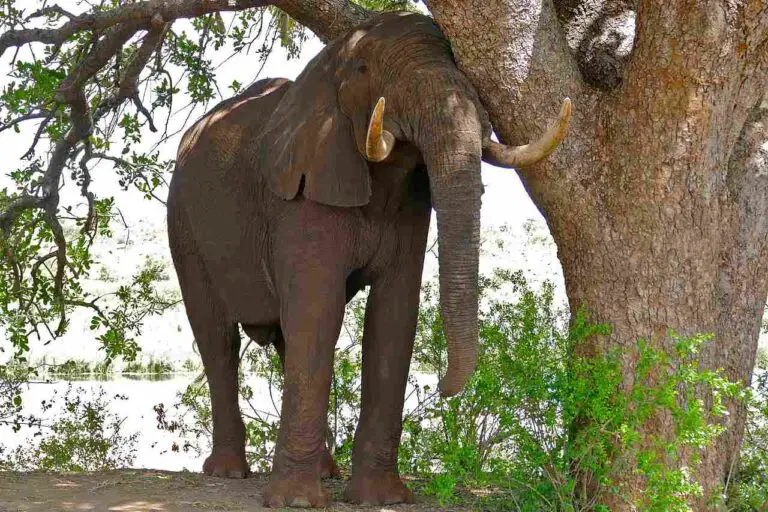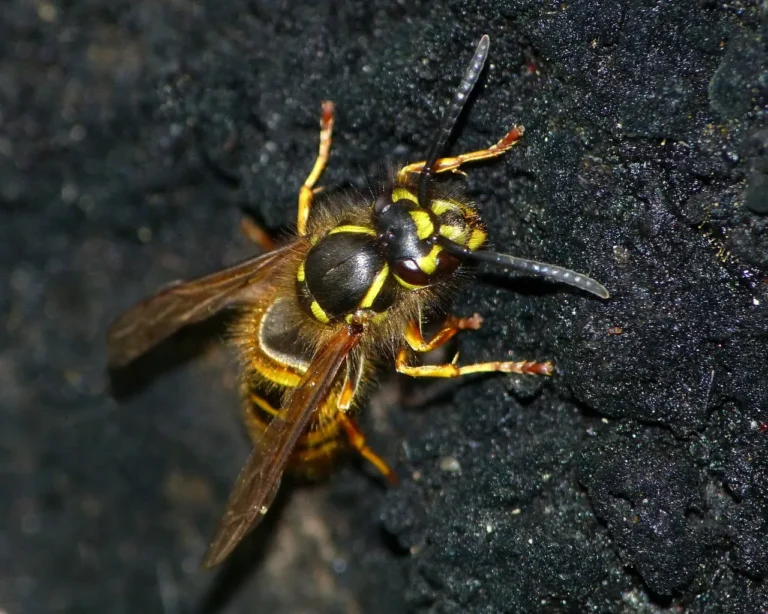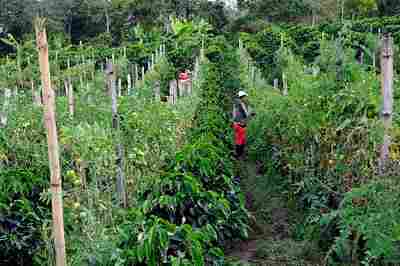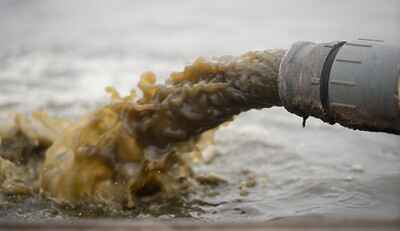17+ Detritivores In The Tropical Rainforest Ecosystem Discussed
Examples of Detritivores in the tropical rainforest ecosystem are dung beetles, termites, millipedes, earthworms, woodlice, leafcutter ants, springtails, slugs, snails, rove beetles, dermestid beetles, carrion beetles, isopods, crane fly larvae, mites, cockroaches, centipedes, and earwigs. These detritivores play a vital role in decomposing organic matter, enriching soil with nutrients, and supporting a balanced food web. Their activities contribute to soil aeration, nutrient recycling, and overall ecological stability, ensuring the health and resilience of the tropical rainforest ecosystem.
1. Dung Beetles
Dung beetles play a crucial role in the tropical rainforest ecosystem by recycling animal waste and returning essential nutrients to the soil. These insects feed on feces from various mammals, breaking it down and aiding in decomposition. They help to minimize the spread of disease by rapidly removing animal waste, and their tunneling activities aerate the soil, enhancing its quality. Dung beetles are known to bury dung underground, which not only provides a food source for their larvae but also facilitates nutrient cycling by allowing decomposed organic matter to mix with the soil. This action contributes to the health of the rainforest by enriching soil fertility and supporting plant growth.
Beyond their ecological impact, dung beetles serve as a food source for other animals, creating a crucial link in the food web. They also reduce waste accumulation on the forest floor, helping to maintain a cleaner environment. Their activity encourages the growth of diverse plant species by dispersing seeds through the dung they process, promoting biodiversity. In summary, dung beetles are essential players in the tropical rainforest, contributing to soil health, nutrient cycling, and the overall ecosystem balance.
2. Termites
Termites are indispensable to the tropical rainforest ecosystem, known for their role in decomposing dead plant matter, particularly wood. As primary detritivores, they break down cellulose, the main component of plant cell walls, which is generally indigestible to most organisms. By consuming decaying logs and branches, termites accelerate decomposition, converting plant material into humus and enriching the soil with nutrients. This process not only clears the forest floor of debris but also provides a stable foundation for new plant growth.
Termites live in colonies and work together to maintain complex nests, often referred to as termite mounds. These structures offer an engineering marvel in terms of ventilation and temperature control, providing ideal conditions for their survival and reproduction. Termites’ nest-building activities create habitats for other species, contributing to biodiversity. Additionally, these mounds play a role in soil structure and stability, making termites key players in maintaining the health and balance of tropical rainforests.
3. Millipedes
Millipedes are vital to the tropical rainforest ecosystem as they consume decaying plant material, such as leaves, wood, and other organic debris. By breaking down this organic matter, they contribute to the decomposition process, turning it into nutrient-rich soil. This process supports the growth of new plants and ensures that the rainforest’s nutrient cycle continues uninterrupted. Millipedes’ feeding habits also reduce the accumulation of dead plant material, lowering the risk of forest fires and facilitating better forest management.
Millipedes are an important food source for various rainforest predators, including birds, reptiles, and small mammals. This makes them a crucial part of the food web, linking plant matter with higher trophic levels. As they move through the forest floor, millipedes also help aerate the soil, promoting root growth and overall soil health. Thus, their presence in the tropical rainforest has both direct and indirect benefits, reinforcing the ecosystem’s stability and resilience.
4. Earthworms
Earthworms play a fundamental role in the tropical rainforest ecosystem through their activity in soil aeration and organic matter decomposition. As they burrow through the soil, earthworms create channels that allow air and water to penetrate deeper, facilitating root growth and nutrient distribution. This improves the overall structure and health of the soil, creating optimal conditions for plant growth. By consuming dead plant material and other organic debris, earthworms convert it into nutrient-rich castings, enhancing soil fertility and supporting the rainforest’s complex nutrient cycle.
In addition to their soil-enhancing activities, earthworms are a vital source of food for many tropical rainforest animals, including birds, amphibians, and small mammals. This makes them a critical link in the food web, connecting the decomposition of organic matter with higher trophic levels. By contributing to soil health and supporting other species, earthworms play a multifaceted role in maintaining the tropical rainforest’s balance and diversity.
5. Woodlice
Woodlice are essential detritivores in the tropical rainforest ecosystem, primarily feeding on decaying plant matter. Their presence aids in the decomposition of dead leaves, wood, and other organic debris, breaking them down into smaller particles and accelerating the nutrient recycling process. As woodlice consume and digest this organic matter, they produce nutrient-rich waste that enriches the soil, supporting plant growth and soil health. Their activities help maintain a cleaner forest floor and ensure that dead plant material doesn’t accumulate excessively.
In addition to their role in decomposition, woodlice are an important food source for many rainforest predators, such as birds, reptiles, and small mammals. This makes them a crucial component of the food web, connecting detritus-based nutrition with higher-level consumers. Woodlice also contribute to the aeration of soil as they burrow and move through the forest floor, promoting better water drainage and root growth. Overall, their presence in the tropical rainforest supports the ecosystem’s balance and diversity.
6. Leafcutter Ants
Leafcutter ants are fascinating and important contributors to the tropical rainforest ecosystem. Unlike other detritivores, they don’t consume decaying matter directly. Instead, they cut leaves from various plant species and transport them back to their colonies, where they cultivate fungus on these leaf fragments. The ants then feed on this fungus, effectively recycling plant material into a more digestible form. This unique method of nutrient processing plays a significant role in breaking down plant matter and returning nutrients to the ecosystem.
Leafcutter ants’ leaf-cutting activity has a profound impact on the rainforest’s vegetation. By pruning trees and plants, they can influence the structure and composition of the forest, promoting the growth of certain plant species over others. Their extensive underground colonies create complex networks that aerate the soil and enhance water infiltration, promoting soil health and plant growth. Leafcutter ants’ activities illustrate the intricate relationships within the tropical rainforest ecosystem, where even seemingly destructive behaviors contribute to a larger balance.
7. Springtails
Springtails are minute yet essential detritivores in the tropical rainforest, contributing to the decomposition process by feeding on decaying plant matter, fungi, and other organic debris. Their presence is a sign of a healthy soil ecosystem, as they help break down complex organic materials into simpler forms, which can be absorbed by plants and other organisms. By processing this material, springtails contribute to soil fertility and structure, promoting robust plant growth and supporting the rainforest’s nutrient cycle.
Despite their small size, springtails are a critical food source for other rainforest species, such as ants, spiders, and small birds. This role in the food web underscores their importance in maintaining ecosystem balance. Springtails also help in soil aeration and water retention by moving through the soil and creating small channels. Their abundance and diversity in the tropical rainforest are indicators of a thriving ecosystem, highlighting their role in supporting the intricate web of life.
8. Slugs
Slugs are versatile detritivores in the tropical rainforest ecosystem, primarily feeding on decaying plant material and other organic debris. Their consumption of dead leaves, plant stems, and other matter contributes to the decomposition process, breaking it down into simpler compounds that enrich the soil with nutrients. This activity supports soil health and fertility, providing a stable foundation for plant growth and maintaining the rainforest’s complex nutrient cycle. By consuming dead plant material, slugs help prevent excessive buildup on the forest floor, reducing the risk of fire and promoting a cleaner environment.
Slugs also play a role in the rainforest food web, serving as prey for various predators, including birds, reptiles, and small mammals. This connection between plant matter decomposition and higher-level consumers illustrates the importance of slugs in maintaining ecosystem balance. Moreover, their movement through the forest floor helps aerate the soil and promote water infiltration, further supporting plant health. Overall, slugs are vital components of the tropical rainforest, contributing to its stability and resilience.
9. Snails
Snails in the tropical rainforest ecosystem are key detritivores, feeding on decaying plant matter, fungi, and other organic debris. This activity aids in the decomposition process, breaking down complex organic materials into simpler compounds that enrich the soil with nutrients. By consuming dead leaves, stems, and other plant parts, snails help maintain a cleaner forest floor and support the nutrient cycle. This contributes to soil health and promotes plant growth, reinforcing the tropical rainforest’s biodiversity and resilience.
Beyond their role in decomposition, snails are an important food source for a variety of rainforest predators, including birds, reptiles, and small mammals. This connection to the food web emphasizes their significance in maintaining ecosystem balance. The shells of snails also contribute to soil structure, providing calcium and other minerals as they decompose. As snails move through the forest floor, they aerate the soil and promote water infiltration, supporting plant health and root growth. Overall, snails are crucial for the health and balance of the tropical rainforest ecosystem.
10. Rove Beetles
Rove beetles are versatile detritivores found throughout tropical rainforests, playing a crucial role in the decomposition of organic matter. With a wide variety of species, they consume decaying plant material, carrion, and even other insects. Their feeding activity accelerates the breakdown of organic debris, contributing to soil fertility and nutrient cycling. This process supports plant growth and helps maintain a clean and healthy forest floor, which is critical in the rainforest’s complex ecosystem.
Besides their role in decomposition, rove beetles serve as a food source for a range of predators, including birds, amphibians, and reptiles. This makes them an essential link in the food web, connecting the process of organic matter breakdown to higher trophic levels. Additionally, rove beetles are known to be opportunistic feeders, which allows them to adapt to various ecological niches in the rainforest. Their presence contributes to the biodiversity and ecological resilience of the tropical rainforest ecosystem.
11. Dermestid Beetles
Dermestid beetles are an important group of detritivores in the tropical rainforest, specializing in the decomposition of carrion, dead plant material, and other organic debris. These beetles are efficient at breaking down tough materials like animal hides and feathers, contributing to the recycling of nutrients within the ecosystem. By consuming decaying animal matter, dermestid beetles help keep the rainforest clean and reduce the spread of disease from rotting carcasses. This activity supports the nutrient cycle and enhances soil health, which in turn benefits plant growth.
Apart from their decomposition role, dermestid beetles are a food source for other rainforest predators, including birds, reptiles, and small mammals. This connection to the food web underscores their importance in maintaining ecological balance. Dermestid beetles can also be found in various stages of decomposition, from fresh carrion to advanced decay, illustrating their adaptability and versatility in finding food sources. Through their role in breaking down complex organic materials, these beetles contribute to the resilience and stability of the tropical rainforest ecosystem.
12. Carrion Beetles
Carrion beetles are specialized detritivores in the tropical rainforest ecosystem, focusing on decomposing animal remains. By consuming carrion, they play a crucial role in nutrient recycling and help reduce the spread of disease by quickly breaking down dead animals. This process contributes to soil fertility by converting decaying organic matter into forms that plants can absorb, supporting the rainforest’s complex nutrient cycle. Carrion beetles also reduce the accumulation of decaying material, keeping the forest floor clean and fostering a healthier ecosystem.
Carrion beetles are known to bury small carcasses, which prevents scavengers from disrupting the decomposition process. This behavior also creates an underground environment that supports soil aeration and plant growth. Carrion beetles, in addition to their role in decomposition, are a food source for various rainforest predators, like birds, reptiles, and small mammals, making them an integral part of the food web. Their presence contributes to maintaining ecological balance and the overall health of the tropical rainforest ecosystem.
13. Isopods
Isopods are crucial detritivores in the tropical rainforest, specializing in breaking down dead plant matter and other organic debris. These small crustaceans, which include species like woodlice and pillbugs, contribute to the decomposition process by consuming decaying leaves, wood, and other plant material. Their activity accelerates nutrient recycling, enriching the soil and supporting plant growth. As isopods break down organic matter, they also help aerate the soil, promoting better water infiltration and root development. This soil-enriching activity is essential in maintaining the tropical rainforest’s health and vitality.
In addition to their role in decomposition, isopods are an important food source for other rainforest species, such as birds, amphibians, and small mammals. This makes them a vital link in the food web, connecting the detrital-based nutrition to higher trophic levels. Isopods can be found in a variety of environments within the rainforest, from the forest floor to decaying logs, illustrating their adaptability. Their presence in the tropical rainforest underscores their importance in maintaining ecological balance and supporting a diverse range of species.
14. Crane Fly Larvae
Crane fly larvae, commonly known as leatherjackets, are important detritivores in the tropical rainforest ecosystem. They primarily feed on decaying plant matter and other organic debris, contributing to the decomposition process. By breaking down dead leaves, wood, and other plant material, crane fly larvae help recycle nutrients and maintain soil fertility. This activity supports plant growth and reinforces the rainforest’s complex nutrient cycle, ensuring a stable environment for a variety of species.
Crane fly larvae are also a significant food source for various rainforest predators, including birds, amphibians, and fish. This makes them a key component in the food web, connecting the decomposition process to higher trophic levels. As they feed on organic debris, crane fly larvae help reduce the accumulation of decaying material on the forest floor, promoting a cleaner and healthier ecosystem. Their presence in the tropical rainforest ecosystem contributes to the overall balance and resilience of the environment.
15. Mites
Mites are small yet critical detritivores in the tropical rainforest ecosystem, playing a significant role in the decomposition of organic matter. With thousands of species, mites consume decaying plant material, fungi, and other organic debris, breaking them down into simpler forms that enrich the soil with nutrients. Their feeding activity supports soil health and promotes plant growth, reinforcing the rainforest’s nutrient cycle. Mites are often found in leaf litter, soil, and decaying wood, illustrating their versatility and adaptability in different microhabitats within the rainforest.
Mites are also an important food source for various rainforest predators, such as ants, spiders, and birds. This connection in the food web underscores their role in maintaining ecological balance and supporting a diverse range of species. Mites’ activity in soil and leaf litter contributes to aeration and improved water infiltration, promoting healthier plant growth. Overall, mites play a vital role in the tropical rainforest, contributing to decomposition, nutrient cycling, and the overall health and stability of the ecosystem.
16. Cockroaches (Certain Species)
Certain species of cockroaches in the tropical rainforest serve as detritivores, feeding on decaying plant matter, fungi, and other organic debris. By consuming these materials, they contribute to the decomposition process, breaking down complex organic compounds into simpler forms that can enrich the soil with nutrients. This activity supports soil health, promotes plant growth, and helps maintain a balanced ecosystem. Cockroaches can be found in various environments within the rainforest, from the forest floor to rotting logs, demonstrating their adaptability in finding food sources.
In addition to their role in decomposition, cockroaches are an important food source for many rainforest predators, such as birds, reptiles, and amphibians. This makes them a key component in the food web, linking detritus-based nutrition to higher trophic levels. The presence of cockroaches helps prevent the accumulation of decaying material, keeping the forest floor clean and promoting a healthier environment. Overall, certain species of cockroaches play a significant role in the tropical rainforest ecosystem, contributing to decomposition and nutrient recycling.
17. Centipedes
Centipedes are voracious detritivores and predators in the tropical rainforest ecosystem, contributing to the decomposition of organic matter. As they feed on decaying plant material and other organic debris, they help break it down into simpler compounds that enrich the soil with nutrients. This process supports soil health and promotes plant growth, ensuring the rainforest’s nutrient cycle continues. Centipedes are also known to prey on other insects and small invertebrates, which helps control insect populations and maintain a balanced ecosystem.
Centipedes’ activity in the forest contributes to soil aeration and water infiltration, promoting healthier root growth and soil structure. Their movement through the forest floor creates small tunnels that can improve soil stability and reduce compaction. As a food source for other predators, centipedes play a role in the food web, linking decomposers to higher trophic levels. Overall, centipedes are essential to the tropical rainforest, helping to maintain ecological balance through their dual roles as detritivores and predators.
18. Earwigs (Certain Species)
Certain species of earwigs in the tropical rainforest are known to feed on decaying plant matter, making them important detritivores. By consuming dead leaves, wood, and other organic debris, earwigs contribute to the decomposition process, converting organic matter into nutrient-rich soil. This activity supports plant growth, soil health, and the rainforest’s nutrient cycle. Earwigs can be found in various locations within the rainforest, including under rocks, in leaf litter, and within decaying logs, highlighting their adaptability.
Earwigs also serve as a food source for a range of rainforest predators, such as birds, reptiles, and small mammals, establishing their importance in the food web. Their activity in decomposing organic matter helps maintain a cleaner forest floor and reduces the risk of disease spread by removing decaying materials. Additionally, earwigs’ burrowing habits contribute to soil aeration and structure. Overall, certain species of earwigs play a vital role in the tropical rainforest, promoting decomposition and nutrient recycling, and supporting a balanced ecosystem.
*Summary
-
Dung Beetles: Feed on animal waste, aid decomposition, and enrich soil with nutrients.
-
Termites: Break down cellulose from wood, create termite mounds, contribute to soil stability.
-
Millipedes: Consume decaying plant material, aerate soil, and support the food web.
-
Earthworms: Aerate soil, decompose organic matter, and support plant growth.
-
Woodlice: Feed on decaying plant matter, enhance soil fertility, and contribute to the food web.
-
Leafcutter Ants: Prune leaves, cultivate fungus, and influence vegetation structure.
-
Springtails: Decompose organic matter, support soil health, and contribute to the food web.
-
Slugs: Consume decaying plant matter, aerate soil, and support plant growth.
-
Snails: Feed on decaying plant matter, provide food for predators, and support nutrient cycling.
-
Rove Beetles: Consume decaying plant material and carrion, supporting decomposition and nutrient cycling.
-
Dermestid Beetles: Break down carrion, reduce disease spread, and enrich soil.
-
Carrion Beetles: Specialize in carrion decomposition, support soil health, and contribute to the food web.
-
Isopods: Decompose organic matter, contribute to soil structure, and support the food web.
-
Crane Fly Larvae: Consume decaying plant matter, support nutrient cycling, and contribute to the food web.
-
Mites: Break down organic matter, enhance soil fertility, and provide food for other species.
-
Cockroaches (Certain Species): Consume decaying plant material, enrich soil, and serve as food for other predators.
-
Centipedes: Act as both detritivores and predators, contributing to soil health and controlling insect populations.
-
Earwigs (Certain Species): Consume decaying plant matter, aerate soil, and support the food web.
| Detritivore | Contribution |
| Dung Beetles |
Feed on animal waste, aid decomposition, enrich soil with nutrients.
|
| Termites |
Break down cellulose from wood, create termite mounds, contribute to soil stability.
|
| Millipedes |
Consume decaying plant material, aerate soil, support the food web.
|
| Earthworms |
Aerate soil, decompose organic matter, and support plant growth.
|
| Woodlice |
Feed on decaying plant matter, enhance soil fertility, and contribute to the food web.
|
| Leafcutter Ants |
Prune leaves, cultivate fungus, influence vegetation structure.
|
| Springtails |
Decompose organic matter, support soil health, contribute to the food web.
|
| Slugs |
Consume decaying plant matter, aerate soil, support plant growth.
|
| Snails |
Feed on decaying plant matter, provide food for predators, support nutrient cycling.
|
| Rove Beetles |
Consume decaying plant material, carrion, support decomposition and nutrient cycling.
|
| Dermestid Beetles |
Break down carrion, reduce disease spread, enrich soil.
|
| Carrion Beetles |
Specialize in carrion decomposition, support soil health, contribute to the food web.
|
| Isopods |
Decompose organic matter, contribute to soil structure, support the food web.
|
| Crane Fly Larvae |
Consume decaying plant matter, support nutrient cycling, contribute to the food web.
|
| Mites |
Break down organic matter, enhance soil fertility, provide food for other species.
|
| Cockroaches |
Consume decaying plant matter, enrich soil, serve as food for other predators.
|
| Centipedes |
Act as both detritivores and predators, contribute to soil health, control insect populations.
|
| Earwigs |
Consume decaying plant matter, aerate soil, support the food web.
|
